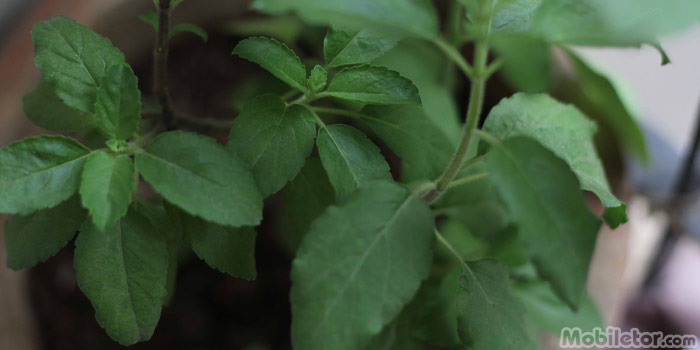The CSIR-Central Institute of Medicinal & Aromatic Plants (CSIR-CIMAP) in India has carried out complete genome sequencing of tulsi, also known as holy basil. The scientific names of this sub-shrub are Ocimum sanctum and Ocimum tenuiflorum, and it has been worshiped by Hindus through the ages as Vishnupriya. This is the first time ever that the whole genome sequence of a traditional, medicinal plant has been carried out via composite next generation sequencing techniques, says an official press release.
Tulsi is chock full of organic compounds like phenylpropanoids, terpenoids and their derivatives. The long list of medicinal properties of the plant stands witness to why it has been so highly revered in Hindu culture. It is used to cure or relive symptoms of various afflictions including bronchitis, asthma, diabetes, arthritis, ear aches, cancer, infertility, fungal infections, persistent fever, hacking cough, insect bites, eye diseases, diarrhea, flu, vomiting, dysentery, malaria, heart problems and much more.

Oil extracted from holy basil can be found in medicines, flavoring and fragrances. The CSIR-CIMAP researchers have conducted the full genome sequencing of tulsi in order to scientifically validate traditional claims of its benefits. Also called the ‘mother of all herbs’, the sub-shrub belongs to the family Lamiaceae and its nuclear genome is the smallest (386 Mb) under the aforesaid classification. Its chloroplast genome (142,245 bp) is the smallest in the order Lamiales and betrays its evolutionary closeness to Salvia miltiorrhiza.
Salvia miltiorrhiza is a plant which is popular in ancient Chinese medicine and its genome size is less compact as compared to that of the Ocimum sanctum. Tulsi has been utilized in traditional medicine apart from Ayurveda. It finds mention in Greek, Roman, Siddha and Unani systems too. By breaking down the whole genome sequence of holy basil, it may be possible to identify the genes responsible for its therapeutic molecules and thus produce them via synthetic biology approaches.
